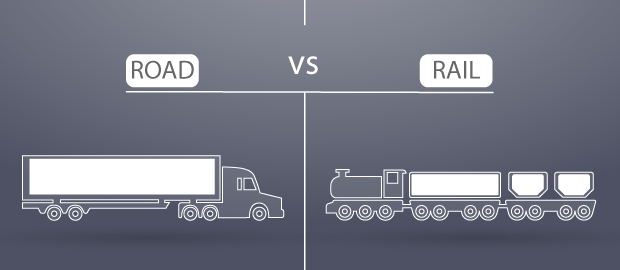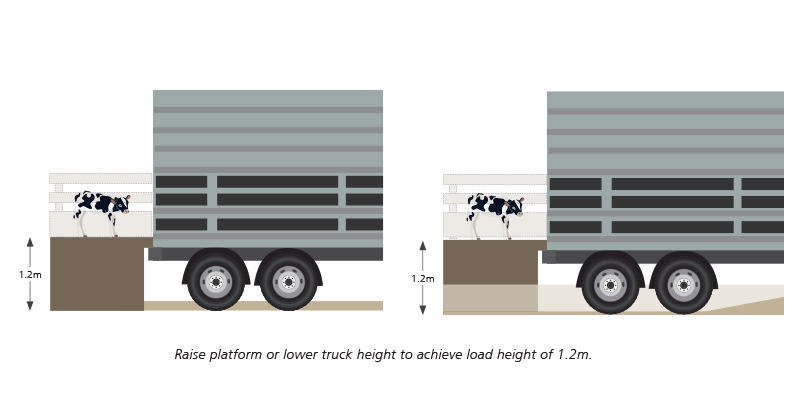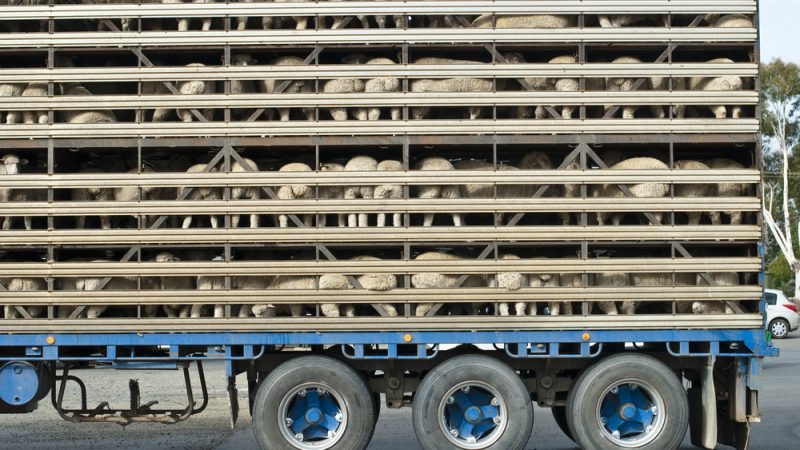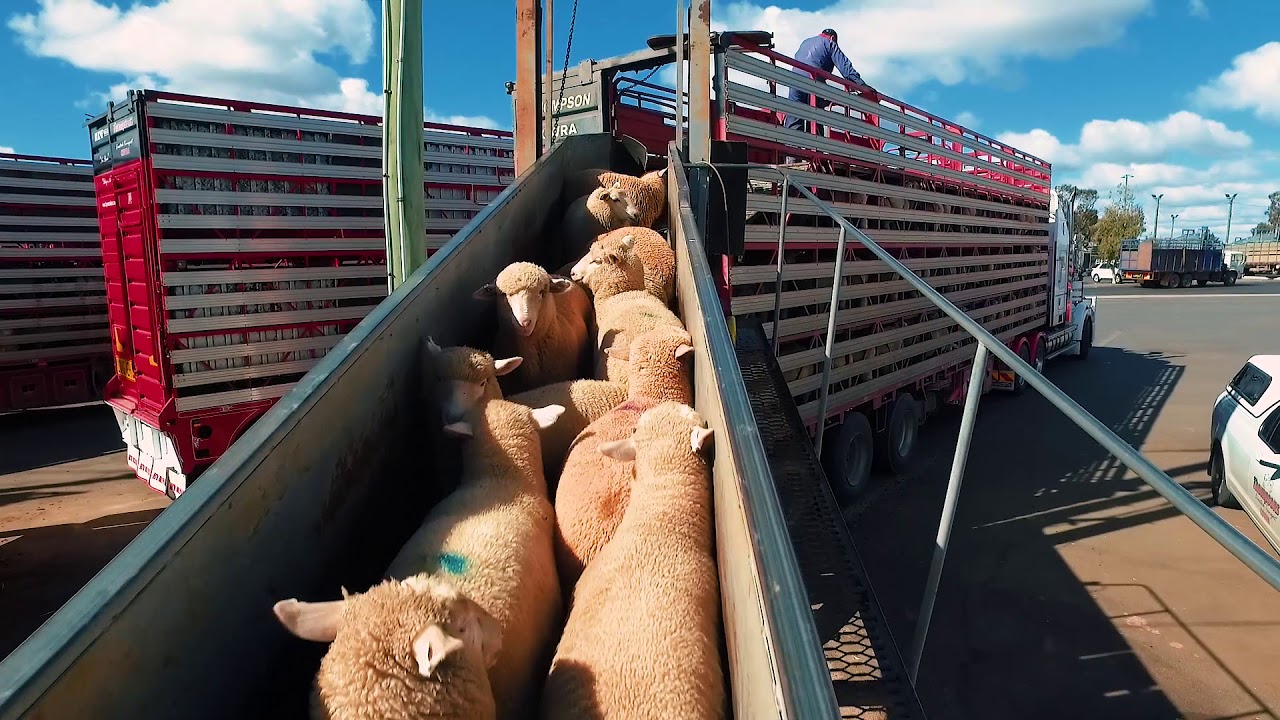Many factors should be considered when selecting the mode of transport. Cost is always important but must be measured

Herding by road was the only form of transport available in the not-too-distant past, and it is still the main method of moving cattle on the farm, and often from farm to farm. Where sale yards or railway loading points, are close by, it is still the cheapest way to move animals. When animals are moved at their natural pace, and if the distance is not too great, stress, as well as loss (e.g. bruising, shrinkage), is minimal. A comfortable distance for beef to walk in a day is 10 to 12 kilometres.
Transport by rail has been a major factor in allowing the centralisation of the industry and in opening new markets. Rail transport should continue to fulfil this role for a long time to come, although it has become less important in the transportation of slaughter stock.
Road transport is taking over a major portion of livestock transportation due to the ease and convenience of transporting cattle by road. It is an important means of reducing stress on livestock. Animals in transit undergo “shrinkage”. This is due to reduced water intake, and to poor food consumption which is characteristic of animals in transit. Shrinkage can amount to 4 to 6% for trips of less than 70 km but can be as high as 8 to 9% for distances exceeding this. Road transport reduces travelling time, and partly overcomes shrinkage.
Selecting The Mode Of Transport
When deciding on the mode of transport, convenience, and cost, must be the major criteria. Allowing animals to walk to their destination, time permitting, is cost-effective, and reduces stress. The only limitation is distance. Although many animals can travel great distances on the hoof, this is not advisable where the abattoir is the destination. Should a farmer decide to herd animals over distances greater than 30 km, care should be taken to plan the route well. Rest and watering points must be identified over the whole route, and the distances travelled each day must not be excessive.
Rail transport is usually cheaper than is motor transport and should always be considered for all forms of livestock. A limitation of rail transport is that the farmer has to pay for the full use of a truck, whether it is full or empty. Farmers need to plan the moving of a consignment of animals well ahead of time in order to request the required number of trucks. Cattle trucks containing livestock are carefully monitored and taken to their destination as quickly as possible. In spite of this, delays do occur. For this reason, rail transport is not always ideal for moving animals to the abattoir.
Road transport is the mode of choice in most cases, because of convenience and efficiency. Animals can be moved to their destination within a matter of hours. There are usually no long delays between requesting the transport, and the actual moving of the animals.
Truck Design
The following should be taken into account when evaluating the suitability of a vehicle, or railway truck, for cattle transport:
Floor space: This should not be less than 1,4m2 per adult bovine. A small calf will require 0,3m2. Where there is a height factor to consider, the roof height should not be less than 1 600mm. Should animals have too much room, they can be thrown around inside the vehicle when it is moving off or coming to a rapid halt. With the correct number, animals tend to lean against one another, and against the sides of the vehicle. This prevents excessive movement. Partitioning in large vehicles is therefore essential.
Floors: These should be solid and impervious, and, most important, must be fitted with grids or cleats to prevent slipping. There must be no spaces between the floor and the side panels.
The sides of the vehicle, and the partitions, must be strong enough to hold the heaviest animal. Preference should be given to sides with solid surfaces, and openings should not allow legs or heads to become stuck. The minimum height for both sides and partitions is 1 800mm.
Ventilation must be adequate. This should not prevent the inclusion of adequate protection against bad weather, sun, rain and wind. Exposure to exhaust fumes must be avoided because this can cause discomfort and suffocation.
Gates warrant attention. A small loading gate has the advantage that the animals cannot turn around, until on the vehicle. Cattle, however, often crash against the sides of a narrow gate, thus injuring themselves. Off-loading gates could span the full width of the truck. This would be possible by designing tip-up gates. The gate used for loading animals ideally should be narrow, but only if it is to be used in conjunction with a loading crush.
 |
 |
Correct Weighing Procedures For Vehicles Used To Transport Cattle
Weighbridge assists in accurately weighing loads ensuring that the weight of cattle corresponds from dispatch to delivery and that vehicles are not overloaded. Weighbridges are usually found at abattoirs, on national roads and at central dispatch points. Weighbridges are calibrated frequently and usually ensure accuracy of weighing and are also usually connected to a recording system which produces a document that accompanies the load to its destination to be compared with the load at the new destination.